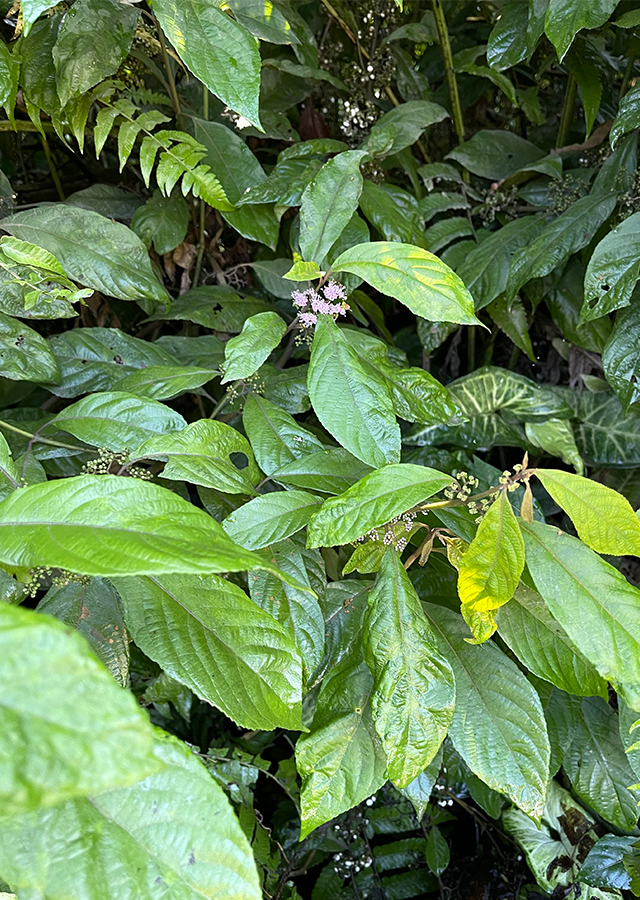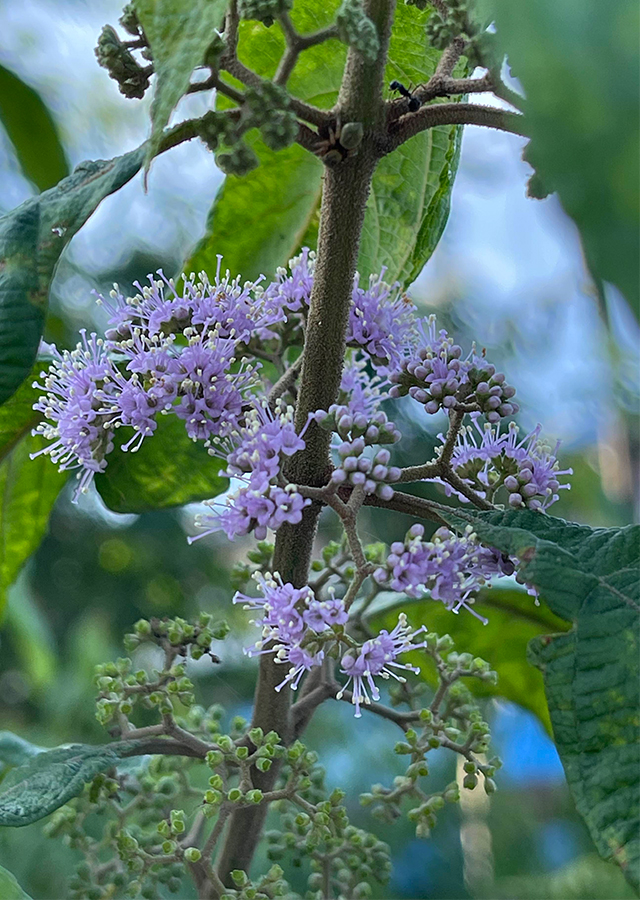Traditional Herbs from Callicarpa longifolia
vaginal discharge_after_birth
- Prepare 7 pieces of sangkareho leaves, turmeric, ginger and galangal about the size of fish eyes, then warm fluffy rice.
- Pound the sangkareho leaves, turmeric, ginger and galangal until smooth.
- Mix ingredients that have been refined with warm fluffy rice.
- Shape into small balls so they are easy to swallow.
- Eat once a day, on the second day the amount reduced to 5 leaves, on the third day the number of leaves decreased to 3 leaves. If the vaginal discharge still continues after the third day then it will be repeated with the same number as the first day and the calculation will be the same on\u00a0the following days until the vaginal discharge after giving birth is completely restored."] }
What is Callicarpa longifolia Looks like??



Parts of Callicarpa longifolia that could be used
Callicarpa longifolia Distribution
Sangkareho originates from Southern China, Southern Thailand through Malaysia, Singapore, the Philippines, Brunei, Indonesia to Papua New Guinea and Australia. This plant is generally planted as an ornamental plant and medicinal plant because it is believed to have health benefits. Chinese people have used the leaves to treat wounds. Meanwhile, in Indonesia, especially the Dayak people, for generations, they have mixed and used the sangkareho plant in several ways which are believed to be effective in treating postpartum vaginal discharge and are still used today. Apart from that, the Kutai and Dayak tribal people also use this plant as a medicine for swelling, pain medicine after childbirth and usually used as a cold powder to treat acne.
Agroecology of Callicarpa longifolia
Sangkareho can be found growing in secondary forests, disturbed areas such as roadsides or open areas in primary forests, bushes, along rivers and streams, hillsides, at altitudes ranging from sea level to 1,700 m above sea level. This plant likes very fertile and well-drained soil, a position in full sunlight, and environmental conditions at an air temperature of 30.4 ºC with an air humidity of 76%. In the wild, this plant is often found in poor, damp and sandy soil.
Morphology of Callicarpa longifolia
- The taproot, yellowish brown in color, has many branches and has many root hairs. It has a bitter, slightly bland taste and a distinctive, slightly pungent odor.
- The stem is round, green, with small spots, covered with hairs like brown or white-brown flakes. Sympodial branching method. pointed tip, base pointed to narrow, leaf veins pinnate, upper surface scattered with branched hairs and yellow sessile glands barely covered with hairs or thinly covered.
- Flowers are small, have narrow funnel-shaped petals with 4 shallow lobes marked with tips. thickened, outer surface with short hairs, inner surface glabrous, brownish green. Crown pale pink to purple, divided into 4 lobes, outer surface with prominent hairs, inner surface glabrous. There are 4 stamens that emerge from the base of the corolla tube. Cyme-type inflorescences, compound or in groups, appear in the leaf axils.
- The fruit is green and becomes white or cream when ripe, fleshy, covered by small hairs and yellow glands, each fruit contains 1-4 seeds.
Cultivation of Callicarpa longifolia
- Propagation is carried out generatively (seeds) and vegetatively (stem cuttings).
- Germination usually occurs within 1-3 months at a temperature of 18\u00b0C.
Callicarpa longifolia, more details :
Chemical Content of Callicarpa longifolia
Flavonoids, tannins, saponins and terpenoids.
Benefits of Callicarpa longifolia
Treats stomach ache, diarrhea, syphilis, fever, malaria, swelling, canker sores, boils, acne, bruises and wounds, cancer, postpartum care, postpartum vaginal discharge, has analgesic activity.
Simplisia of Callicarpa longifolia
- Prepare the sangkareho leaves, then wash them with clean water.
- After they are clean, drain them so that the remaining washing water is wasted.
- Chop them to a width of 1.5 cm so that the drying process takes place more quickly.
- Dry them in the air- Air it in a place protected from sunlight.
- Crush the dried leaves until they become powder then sift them with a 60 mesh sieve.
- Store in a clean, airtight container.
Another Facts for Callicarpa longifolia :
Synonym of Callicarpa longifolia
Callicarpa albida Blume, Callicarpa attenuata Wall. ex Walp., Callicarpa blumei Zoll. & Moritzi
Habitus of Callicarpa longifolia
Bush. Annual shrub, up to 6 m high
Habitat of Callicarpa longifolia



No comments:
Post a Comment